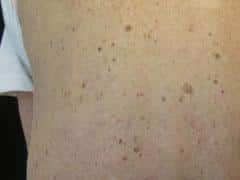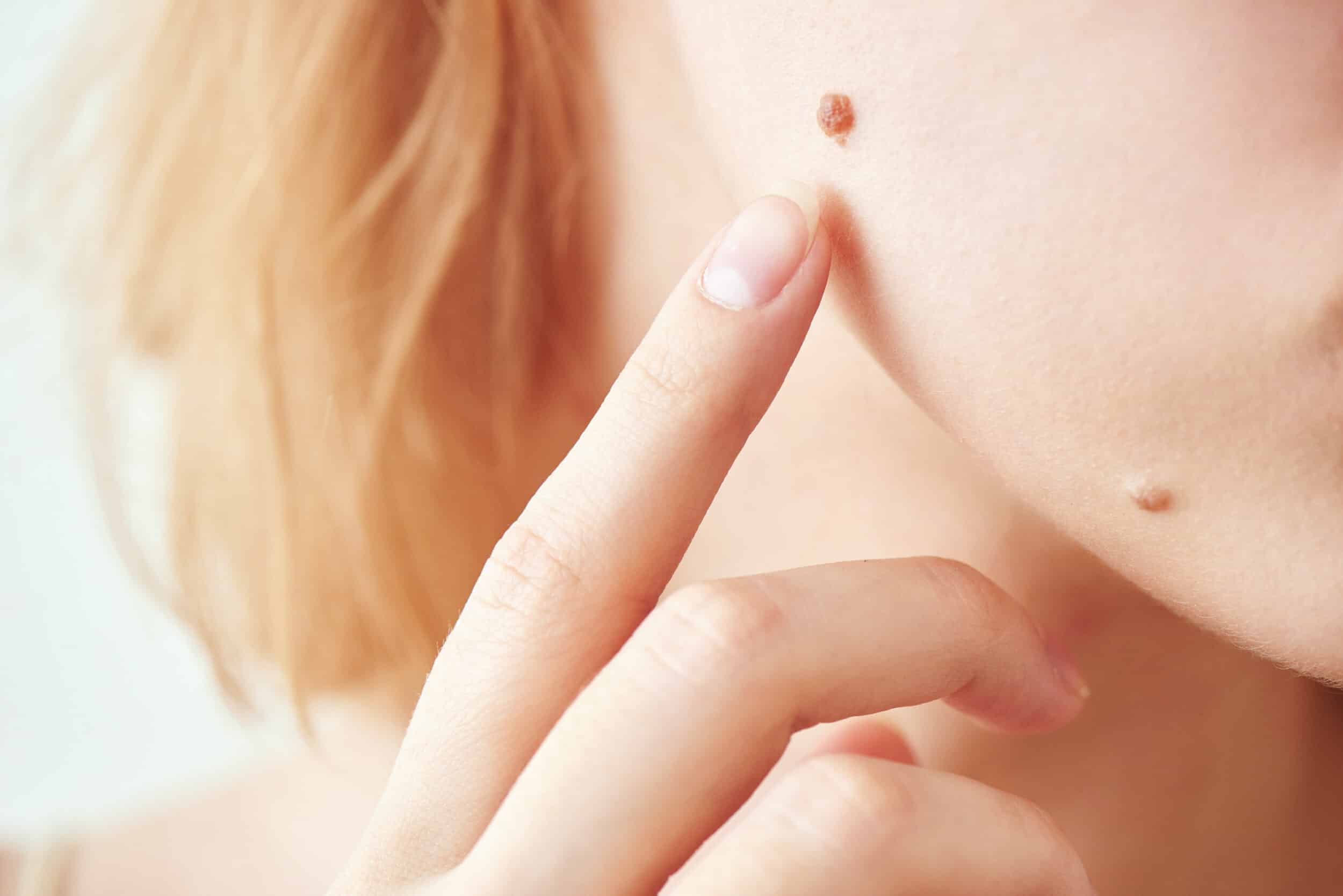
Most moles are normal and can exist on your body without changing or causing problems. Occasionally, new moles pop up or old moles change and can cause concern or embarrassment. The procedures most commonly used to remove moles are either a shave biopsy or a punch biopsy. Any mole removed in our offices is sent to the lab for pathological assessment.

What is a Shave Biopsy for Mole Removal?
After numbing the skin, a shave biopsy consists of painlessly cutting the lesion off of the skin. After this procedure you will develop a scab that will heal within a couple of weeks. In some cases, you will be left with a small white round scar in the area that has been removed, which generally is less noticeable than the mole was.
What is a Punch Biopsy for Mole Removal?

A punch biopsy is like a very small cookie cutter that is used to cut the mole out. This goes deeper than a shave biopsy and usually one or two stitches are required to close the wound. The scar left from a punch biopsy is usually a small white line.
It is important to have any new or changing mole evaluated early on to assess for the possibilities of skin cancer. A regular skin exam is highly recommended, especially in those with previous skin cancers or who have family members with a history of skin cancer.
How Do I Know if a Mole Needs To Be Removed?
If a mole changes in size, shape, or color, it may warrant a professional evaluation. A dermatologist should assess moles that are asymmetrical, have irregular borders, or have multiple colors.
Additionally, moles that bleed, itch, or become painful are concerning and should be examined. If a mole appears after age 30, it is also advisable to have it checked and possibly removed.
What Are the Signs of a Mole Becoming Cancerous?
The ABCDEs of melanoma provide a guideline for identifying potentially cancerous moles:
- Asymmetry: One half of the mole does not match the other.
- Border: The edges are irregular, ragged, or blurred.
- Color: There is a variety of colors, including different shades of brown, black, or even patches of red, white, or blue.

- Diameter: The mole is larger than 6mm (roughly the size of a pencil eraser). Keep in mind that melanomas can be smaller, particularly if diagnosed early.
- Evolving: The mole changes in size, shape, and color or begins to bleed or itch.
Regular skin checks and prompt evaluation of any concerning changes are crucial in detecting melanoma early.
Will Removing a Mole Leave a Scar?
The possibility of scarring depends on several factors, including the mole’s size, location, and removal method.
Smaller moles and those removed by less invasive techniques, like shaving or laser removal, typically result in minimal scarring. Surgical excision, especially for larger or deeper moles, is more likely to leave a scar.
The dermatologists at Skin & Beauty Center employ techniques to reduce scarring, such as precise incisions and careful suturing. Proper post-procedure care also plays a significant role in scar reduction.
How Should I Care for the Area After Mole Removal?

Proper care after mole removal is essential for healing and minimizing scarring. Follow these steps:
- Keep the area clean and dry: Gently cleanse with soap and water and pat dry.
- Apply an antibiotic ointment: This helps prevent infection and promotes healing.
- Cover with a bandage: Protect the area with a clean bandage, changing it daily or as directed by your doctor.
- Avoid picking or scratching: Let scabs form and fall off naturally.
- Limit sun exposure: Protect the area from the sun using clothing or sunscreen with at least SPF 30.
- Follow your doctor's instructions: Adhere to any specific care instructions provided by your dermatologist.
Can Moles Grow Back After Being Removed?
In some cases, moles can grow back after removal. This is particularly true if not all the mole cells were completely excised. Regrowth is also more common with shaving or laser techniques, as opposed to surgical excision.
A dermatologist should re-evaluate a recurring mole to ensure it does not indicate a more serious condition, such as melanoma. If a mole does regrow, further treatment options, including re-excision, may be considered to prevent recurrence and ensure thorough removal.
Why Choose Skin & Beauty Center?
At Skin & Beauty Center, we pride ourselves on being California’s most comprehensive skin care center. We offer an array of medical, surgical, and cosmetic dermatology services, including mole removal, at our seven locations.
Our dedicated team of board-certified dermatologists, dermatopathologists, aestheticians, and surgeons specializes in dermatologic, cosmetic, Mohs, and aesthetic surgeries. We all work together to ensure you receive the highest-quality care.
With over 3,700 highly rated reviews on Google and Yelp, our commitment to excellence and patient satisfaction is evident. We combine extensive training in diagnosing and treating skin disorders with a compassionate approach to patient care.
